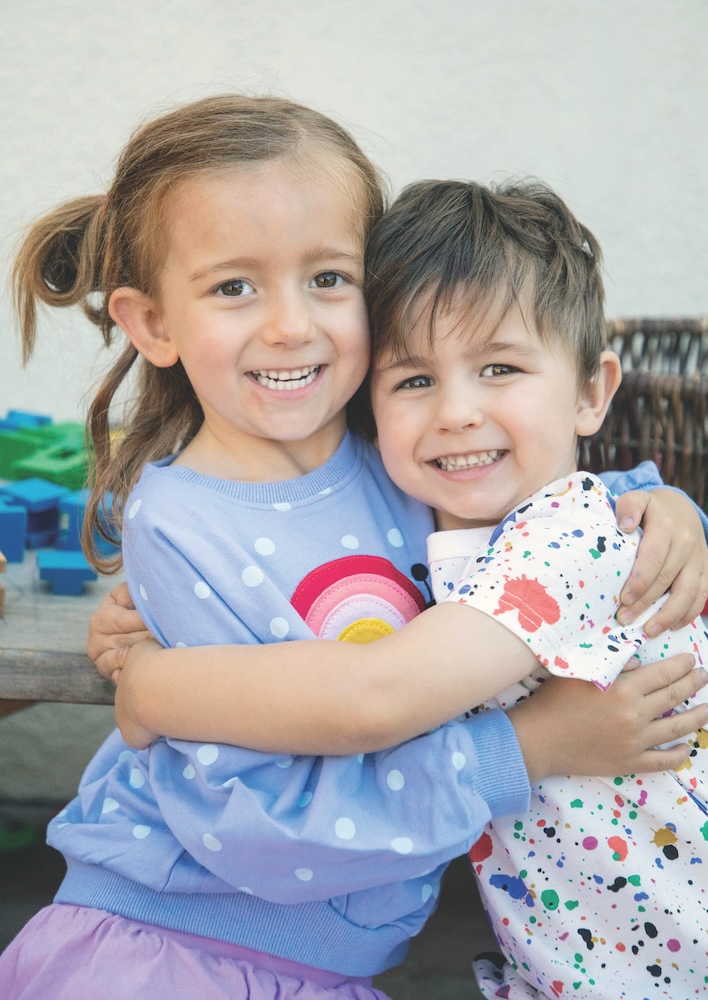Storyteller

Thirty-seven years after its founding in the parking lot at Transition House – where the goal was simply to create safe play spaces for children experiencing homelessness – the nonprofit now known as Storyteller has gone through some transitions of its own in the last year. All of that is represented in the organization’s name, as the nonprofit recently shortened its moniker from Storyteller Children’s Center. The last word was lopped off to reflect the nonprofit’s multiple locations, including, in a full circle moment, adding classrooms onsite at Transition House in 2023.
But dropping the middle name from its moniker is the more telling change, meant to represent Storyteller’s understanding of what it takes to more effectively help its young clients.

“We didn’t just change our name – we changed our mission and our vision,” explained Dr. Gabriella Garcia, Storyteller’s Executive Director. “It’s a rebrand to reflect the concept that what we do is help children and families rewrite their stories, and recognize that as a social change organization, we are helping families break cycles. That’s how we continue to grow as a shaper of stories, with the idea that every child deserves a happy beginning and the support necessary to nurture a better future story.”
The therapeutic preschool has long provided high quality education and caregiving for children – from as young as just a few months old to age five – who are facing economic adversity and other challenges. The aim is to make sure that those in their care have early healthy experiences that build a solid foundation to help them thrive and prosper in life.
That hasn’t changed.
“We continue to be a safe place for children who are facing adversity, and our curriculum is still very much based on child-led learning and play,” Garcia said. “But it’s evolved so much now over the years. We became one of the first organizations in Santa Barbara to offer trauma-informed care to children, even before Santa Barbara Unified adopted the model. We have onsite mental and behavioral health support, and provide two nutritious meals every day because a lot of our families don’t have kitchens where they can cook. We arrange for medical and dental screenings, speech therapy, whatever a child may need. We offer a great atmosphere for restorative sleep, which is so important – but may be hard to have because they live in crowded housing or shelters or even in their cars. We’re a one-stop shop, which makes a big difference. So we really want our new brand and messaging to reflect that we are pioneers in this space, and continue to be the go-to place for children who are the most vulnerable in our communities, as well as their families.”
In recent times, Storyteller has expanded its work from focusing solely on children to serving entire families, providing resources and comprehensive services for parents and guardians, including resources for housing insecurity and nutritional meals throughout the day for the children to relieve the family’s burden.
“Success comes from acknowledging, addressing and breaking cycles of generational trauma and poverty for the entire family,” Garcia said. “Our families often come from trauma backgrounds or they themselves faced adversity as children. Parents, of course, are their children’s first teachers, and they may not realize how the cycles are perpetuated. Partnering with the families is really at the core of what we do so that they can break cycles for themselves.”
The main focus remains on the young children in Storyteller’s care, of course.
“Our curriculum is still very much based on child-led learning and play,” Garcia said. “Studies have shown that healing comes from being outdoors, so that’s where we conduct a lot of our lessons, especially because so many of our children live in crowded housing or are experiencing homelessness, living in cars or hotels. It’s a big part of who we are.”
The therapeutic offerings are also meant to equip the students and their families with the means to achieve future success – not only through providing a safe space and two square meals a day, but also by giving young children the working tools to succeed, in elementary school and throughout their lives.
“It’s so important because by third grade, there are studies and signs that say children will either thrive or perhaps go down a wrong path,” Garcia said. “It’s so young, which is why early intervention – or rather helping the children and their families early – is what we focus on. One hundred percent of our families live under the poverty line. In a place like Santa Barbara where there are so many resources, we want to make sure that the gap isn’t widening for the children who are facing adversity when they’re starting school. Having them start on par with their peers is one of our biggest goals.”
The payoff for the community and the greater society is exponential, Garcia said.
“The return on our investment is huge, anywhere from $7 to $16 dollars per one dollar spent on early childhood education and intervention,” she said. “When we look at the mental health crisis that so many people face in our society, it’s hard not to wonder; what might be different if we were to have given these people tools when they were children? That’s why we’re here.”







You must be logged in to post a comment.